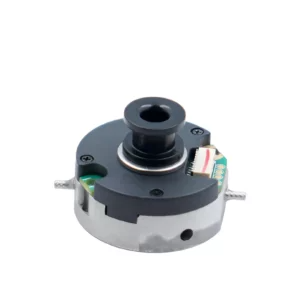


Why Big Machines Need Special Sensors to Work Faster and Smarter
Big machines are the backbone of industries like manufacturing and construction, powering operations with precision and efficiency. In construction, machinery such as cranes, excavators, and fire trucks play critical roles in completing tasks that demand speed, accuracy, and safety. To meet these demands, technology has introduced advanced sensors that measure rotational position, speed, and direction, enabling machines to work smarter and faster.
One such innovative sensor is the hollow rotary encoder—an industry-specific tool designed to adapt seamlessly to the diverse needs of the heavy industry sector. These encoders not only enhance the intelligence of machinery like cranes and excavators but also ensure operational safety and precision. Let us understand the specifications of hollow rotary encoders and explore their impact on the heavy industry sector.
Why is a Hollow Rotary Encoder a special sensor?
A hollow rotary encoder is a special sensor because of its unique design and specific applications. The following points explain why it is special:
Hollow Shaft Design
High Accuracy and Resolution
How does a rotary encoder work?
A hollow rotary encoder works by directly converting the rotational motion of a hollow shaft into electrical signals that provide information about position, speed, or direction. Here’s how it operates:
Benefits of Using Hollow Rotary Encoders
The integration of a hollow shaft rotary encoder into machines offers numerous advantages:
As industries move toward smarter technologies, the demand for advanced sensors like hollow shaft rotary encoders will only grow. These sensors will enable machines to become even more intelligent, efficient, and interconnected. Seeking the demand for such sensors in the heavy industry sector, reliable sensor manufacturers like Nozomotion ensure that manufacturing has a strong back-up of research and development.
Hollow rotary encoders like sensors are indispensable for big machines to operate faster and smarter. They provide the precision, speed, and adaptability required in today’s highly competitive industrial landscape. Whether it’s manufacturing, construction or other industries, these sensors ensure that big machines perform at their best, driving innovation and efficiency across industries.
